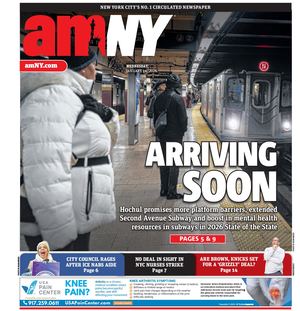As New Yorkers prepare for another hurricane season, a new report released on Thursday suggests over 460,000 homes in the state are at risk of being completely destroyed by storm surge.
According to the annual report by data and analytics provider CoreLogic, the cost of reconstruction in New York could total $190 billion, impacting 462,380 homes. Along the Atlantic and Gulf coasts, 6.9 million homes in 19 states could be affected by storm surge, totaling $1.6 trillion in reconstruction costs.
Senior hazard scientist Tom Jeffery, who worked on the report, said he hopes people use the information to better understand where the risks lie and prepare accordingly.
“We’re not trying to predict the damage from the next storm. We’re really just trying to give an overview,” Jeffery said.
The National Oceanic and Atmospheric Administration predicts a 75 percent chance that the 2018 Atlantic hurricane season, which runs from June 1 to Nov. 30, will be near or above normal.
There’s a 70 percent likelihood of 10 to 16 named storms, according to forecasters, of which five to nine could become hurricanes. An average hurricane season usually results in about 12 named storms, six of which become hurricanes, per the NOAA.
While New York ranks fifth in the number of at-risk homes, the report lists the state second in reconstruction cost value (RCV) due to higher construction costs in the area.
“When you’re talking about those New York numbers, which certainly do stand out, the reconstruction cost value is higher just because of the cost of labor and materials in that specific area,” Jeffery said.
New York’s high RCV ranking also demonstrates that the location of future storms is essential to understanding the potential dangers to coastal homes. Even a small storm in the wrong area could have disastrous consequences.
“[Superstorm] Sandy was a prime example of that,” Jeffrey said.
It’s also important to remember that storm surge affects more than the houses located right on the waterfront, he added.
“When we talk about storm surge, we’re not just talking about those multimillion-dollar mansions right on the beaches,” Jeffrey said. “A lot of people who have homes — just normal 2,000-square-foot homes — those homes can be at risk as well.”
Those who lived in the city during superstorm Sandy in 2012 are all too familiar with the dire consequences a storm surge can have on both residential and commercial property. An estimated 650,000 homes were damaged or destroyed as a result of Sandy, according to the National Hurricane Center.
The figures outlined in CoreLogic’s report represent what it would cost to completely rebuild homes in the at-risk area, assuming the “worst case scenario” of a storm surge. It also does not include buildings over four stories tall because a typical storm surge would only impact the first and possibly the second floor of a home.
“We felt the way we did it, even though it does not incorporate all of those high-rises, we’re trying to err a little bit on the side of caution so that we don’t really over inflate the numbers, which appear very large as they already stand,” Jeffery said.
And the numbers are expected to increase year-over-year, as people continue to buy or build homes in at-risk coastal zones.
“It certainly is everyone’s right to live where they want to live,” Jeffery said, adding that the purpose of the report is to give people an understanding of the risk they’re facing. “They can then make the decision of what that means to them individually, whether they want to explore the opportunity for increased flood insurance or make preparations or plans in the case of that event happening.”





































